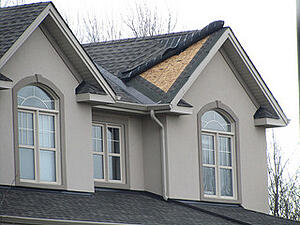
Winter is over, spring has sprung, and with it comes a new to-do list for taking care of your investment property’s roof. Real Estate Investors around the country are getting ready for warmer days and the opportunity to do some preventative maintenance to their properties. We hope you saw to it that the proverbial hatches were battened down for winter.
Now that the days are warmer, it’s time to venture outside for a fresh round of roof maintenance.
Starting Spring Roof Maintenance
Inspect for Winter Damages
The longer you leave roof damage, the worse it can get, and the more repairs will cost you. First things first, inspect the condition of your roof to catch any problems before they have the chance to grow. You don’t necessarily need to call out the roof crew to assess the roof’s condition. Some problems you or your property management can catch in time and apply a DIY fix.
Related Article: How To Stand Out Among Real Estate Investors
Go Ground Up
Start by circling the perimeter, looking up at the gutters. You’re checking for:
- Sagging roof lines
- Loose or missing shingles
- Signs of clogged or collapsed gutters
- Water stains from overflowing gutters. If water is collecting in your gutters, they’ll be a perfect breeding ground for mosquitos.
- Leaf debris
- Moss, algae or mold growth
Get on the Roof
Wait for a relatively calm, windless day before you break out the ladder. Climb up on the roof for a closer inspection of the roof. Walk around and start replacing damaged or missing tiles. While you’re at it, this is a good time to take care of clogged gutters. While you’re up, check on chimneys, vents and fans as well as the condition of sealants and flashings.
If a problem is too big to handle, bring in the professionals. It’s better to have things done right the first time, rather than taking on a project that won’t fix the issues properly.
Climate Problems
Every location will face unique challenges when it comes to roof maintenance. Climate pays a big role in what sort of problems may arise for the roof of an investment property. Consider these:
Critters
They may be bird, squirrels, raccoons or termites, but you don’t want any of them taking up residence in your roof. Signs of these unwanted tenants can usually be found in an attic or crawl space — look for nests, acorns, droppings or other evidence. While bees are not often a problem, they have been known to set up shop in roofs and attics. If this is the case, call a beekeeper to relocate the hive rather than an exterminator. Block those holes and potential entrances to keep critters out.
Humidity
Watch out for mold, algae and other growth in humid climates. They can cause structural damage and kick up allergies for your tenants.
Storm Damages
Check the roof after every major storm for loosened or missing tiles and pay attention to the stability of nearby trees. You wouldn't want a loose branch to fall onto your investment property.
Snow Weight Damages
Snow can build up to weights that cause roofs to outright collapse. If you live in a snowy climate, be sure that during the winter you have a service on call to remove snow build-up. Pay close attention to the structural integrity of your roof, year-round.
Sun Damage
Over time, sun exposure can decrease the longevity of roof treatments and sealants. Check to be sure that they’re holding up in the heat.
What do you check first on your investment property for spring maintenance? Tell us in the comments.












